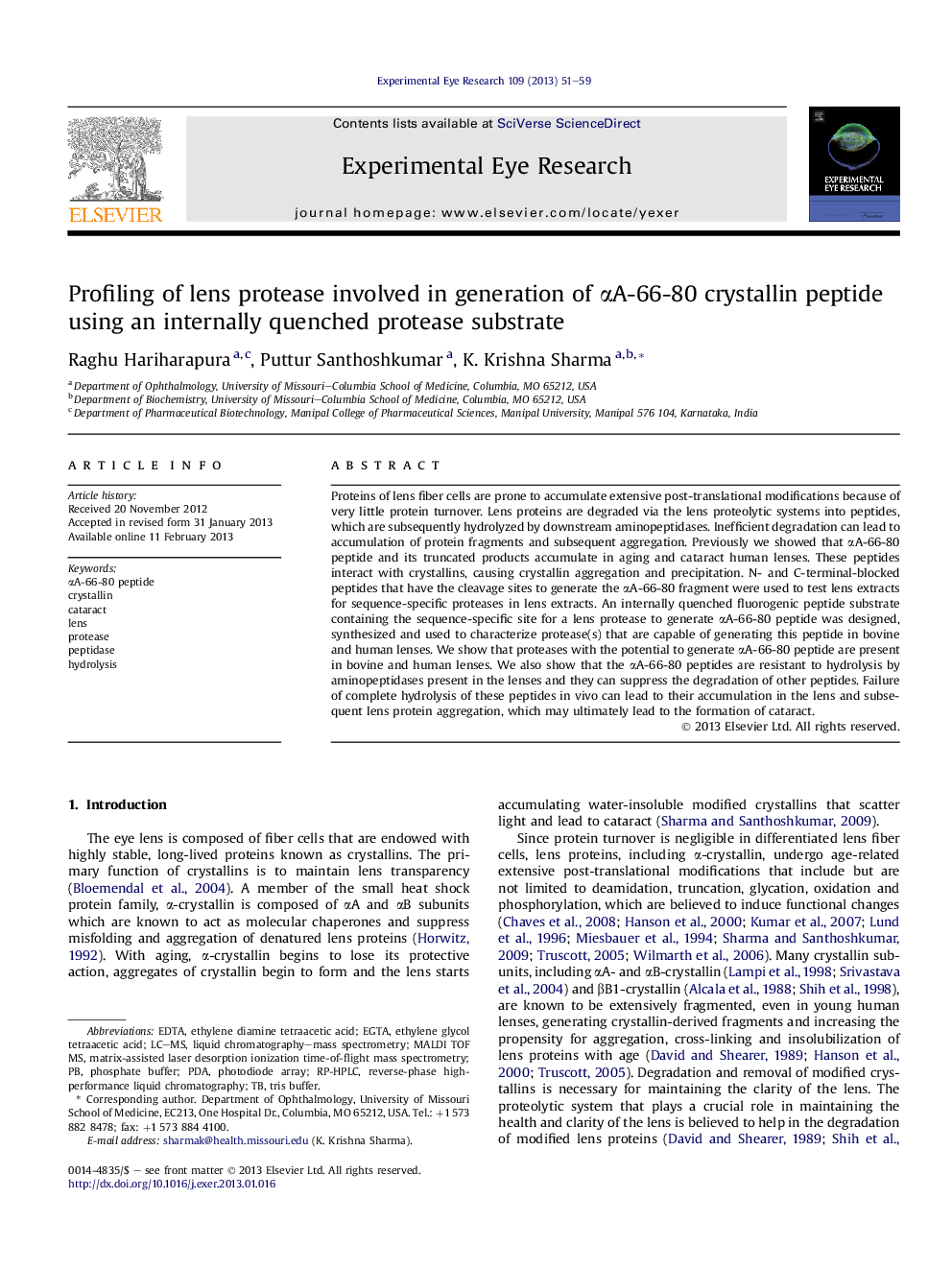| کد مقاله | کد نشریه | سال انتشار | مقاله انگلیسی | نسخه تمام متن |
|---|---|---|---|---|
| 4011258 | 1602613 | 2013 | 9 صفحه PDF | دانلود رایگان |

Proteins of lens fiber cells are prone to accumulate extensive post-translational modifications because of very little protein turnover. Lens proteins are degraded via the lens proteolytic systems into peptides, which are subsequently hydrolyzed by downstream aminopeptidases. Inefficient degradation can lead to accumulation of protein fragments and subsequent aggregation. Previously we showed that αA-66-80 peptide and its truncated products accumulate in aging and cataract human lenses. These peptides interact with crystallins, causing crystallin aggregation and precipitation. N- and C-terminal-blocked peptides that have the cleavage sites to generate the αA-66-80 fragment were used to test lens extracts for sequence-specific proteases in lens extracts. An internally quenched fluorogenic peptide substrate containing the sequence-specific site for a lens protease to generate αA-66-80 peptide was designed, synthesized and used to characterize protease(s) that are capable of generating this peptide in bovine and human lenses. We show that proteases with the potential to generate αA-66-80 peptide are present in bovine and human lenses. We also show that the αA-66-80 peptides are resistant to hydrolysis by aminopeptidases present in the lenses and they can suppress the degradation of other peptides. Failure of complete hydrolysis of these peptides in vivo can lead to their accumulation in the lens and subsequent lens protein aggregation, which may ultimately lead to the formation of cataract.
► Reasons for the generation and accumulation of αA-66-80 peptide in the lens.
► An internally quenched fluorogenic substrate was used to identify the proteases.
► One or more proteases are responsible for generation of these peptides.
► αA-66-80 peptide is resistant to hydrolysis by lens peptidases.
► Accumulation of αA-66-80 may promote protein aggregation and cataract development.
Journal: Experimental Eye Research - Volume 109, April 2013, Pages 51–59